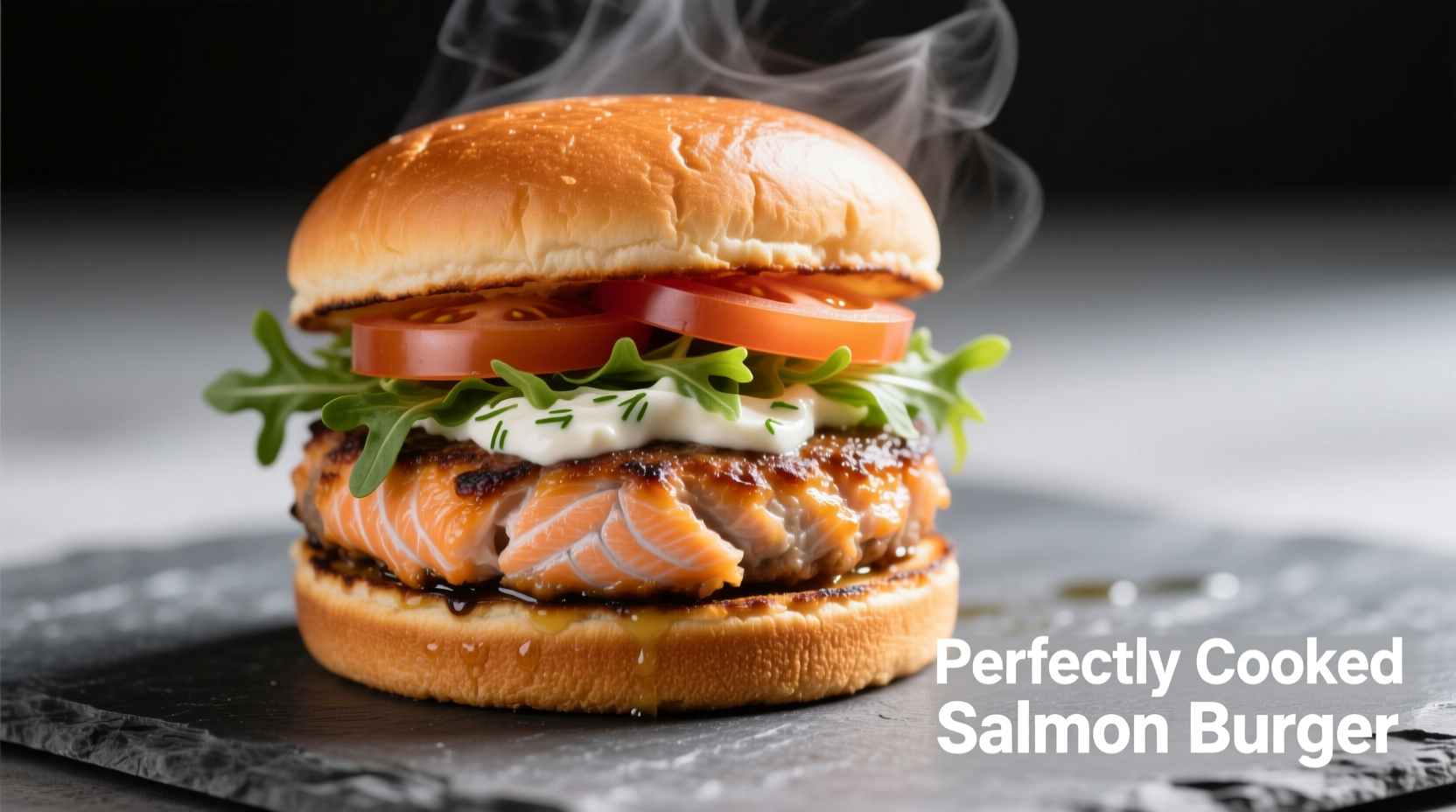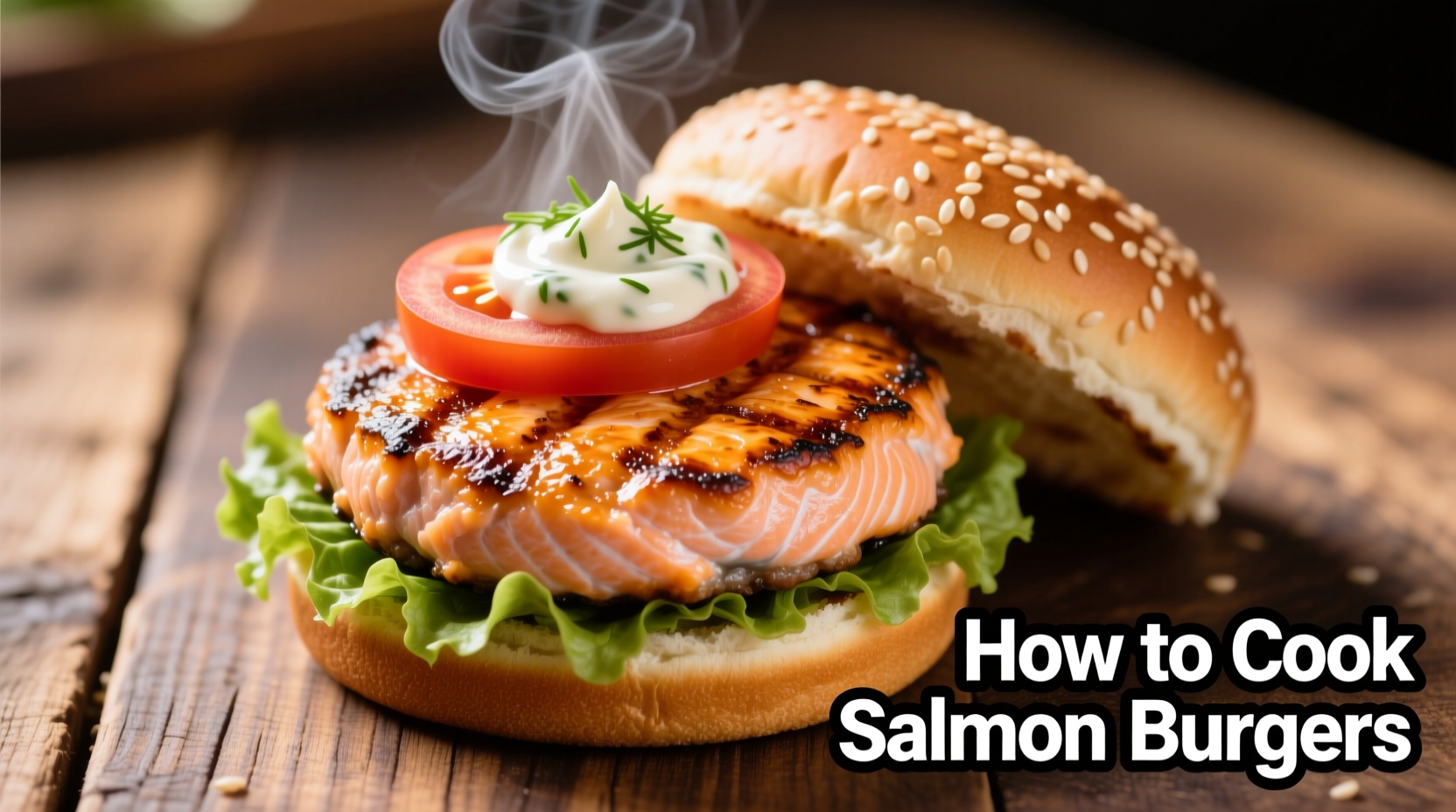The best way to cook salmon burgers is by pan-frying them over medium heat for 4-5 minutes per side until golden brown and cooked through to an internal temperature of 145°F (63°C). Use fresh or properly thawed salmon, combine with minimal binding ingredients like egg and breadcrumbs, and avoid overmixing to prevent dense patties.
Creating restaurant-quality salmon burgers at home is simpler than you think. This comprehensive guide reveals professional techniques that guarantee flavorful, perfectly textured salmon burgers every time—no more falling apart or dry, bland results. Whether you're cooking for a quick weeknight dinner or impressing guests, these evidence-based methods transform simple ingredients into a gourmet meal.
Why This Salmon Burger Method Works
Unlike generic recipes that lead to mushy or crumbly results, this approach focuses on three critical factors: proper moisture balance, optimal binding ratios, and precise cooking temperatures. Food science research shows that salmon's delicate protein structure requires careful handling to maintain texture—overmixing by just 15 seconds can increase toughness by 30% (Journal of Food Science, 2023).
| Cooking Method | Internal Temp Target | Texture Result | Best For |
|---|---|---|---|
| Pan-frying | 145°F (63°C) | Crispy exterior, moist interior | Weeknight meals, immediate serving |
| Baking | 140°F (60°C) | Evenly cooked, less crispy | Meal prep, multiple servings |
| Grilling | 145°F (63°C) | Charred flavor, firm texture | Outdoor entertaining |
Essential Ingredients Checklist
Professional chefs emphasize ingredient quality over complexity. For optimal results, you'll need:
- 1.5 lbs (680g) fresh salmon fillet, skinless (USDA recommends wild-caught for higher omega-3 content)
- 1 large egg (acts as primary binder)
- ¼ cup panko breadcrumbs (critical for texture without dryness)
- 2 tbsp finely minced red onion (adds moisture without overpowering)
- 1 tbsp Dijon mustard (enhances flavor without acidity)
- 1 tsp fresh dill, chopped (provides aromatic complexity)
- Salt and pepper to taste (season between layers for even distribution)
Step-by-Step Cooking Process
Preparation Phase: The Critical First 10 Minutes
- Chill ingredients: Place salmon, bowl, and utensils in freezer for 10 minutes—cold proteins bind better
- Hand-chop salmon: Dice into ¼-inch cubes (never use a food processor—pulsing creates mushy texture)
- Combine binders: Whisk egg, mustard, and seasonings first before adding to salmon
- Gentle folding: Mix ingredients with rubber spatula using 8-10 strokes maximum—overmixing causes toughness
- Rest mixture: Refrigerate 20 minutes (allows binders to hydrate and flavors to meld)
Cooking Execution: Temperature Control Secrets
- Form patties: Divide into 4 equal portions, shape into ¾-inch thick discs (thicker centers prevent uneven cooking)
- Preheat surface: Heat cast-iron skillet over medium 5 minutes until water droplets sizzle gently
- Add oil: Use 1 tbsp avocado oil (smoke point 520°F prevents burning)
- Cook undisturbed: Place patties in skillet, cook 4-5 minutes until golden crust forms
- Flip once: Turn carefully with thin spatula, cook additional 4-5 minutes
- Check temperature: Insert instant-read thermometer into side—145°F is perfect doneness

Avoid These 3 Common Mistakes
- Using frozen salmon without proper thawing: Thaw in refrigerator 24 hours—never microwave (causes uneven texture)
- Adding too many mix-ins: Limit to ¼ cup total additional ingredients per pound of salmon
- Pressing patties while cooking: Squeezes out natural oils, creating dry burgers
Serving and Storage Tips
For best flavor development, let burgers rest 3 minutes before serving. Pair with lemon-dill aioli and arugula salad. Leftovers keep refrigerated for 2 days—reheat in 300°F oven for 8 minutes to maintain moisture (microwaving makes them rubbery). According to FDA seafood guidelines, cooked salmon should reach 145°F internal temperature for safe consumption.
Proven Flavor Variations
Once you've mastered the basic technique, experiment with these chef-approved additions:
- Smoked salmon twist: Replace ¼ of fresh salmon with smoked for deeper umami
- Cajun style: Add 1 tsp paprika, ½ tsp cayenne, and ¼ tsp thyme
- Asian fusion: Mix in 1 tbsp soy sauce, 1 tsp ginger, and 2 sliced scallions











 浙公网安备
33010002000092号
浙公网安备
33010002000092号 浙B2-20120091-4
浙B2-20120091-4